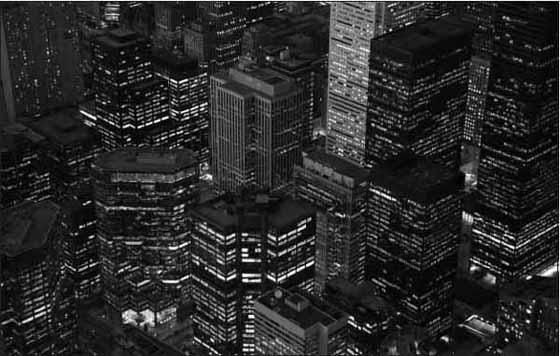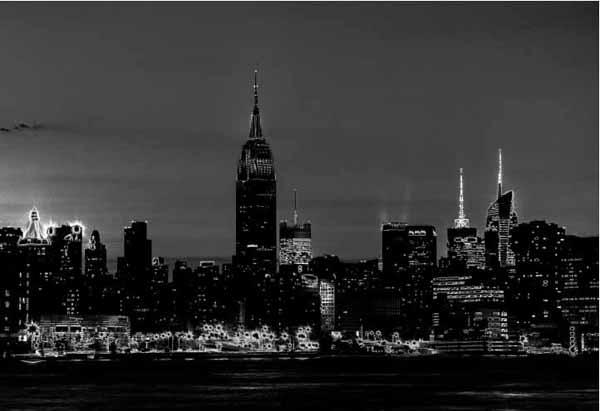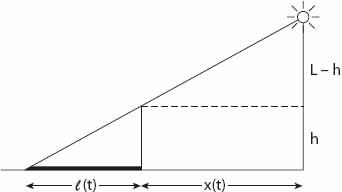X and the City: Modeling Aspects of Urban Life (63 page)
Read X and the City: Modeling Aspects of Urban Life Online
Authors: John A. Adam

All the coefficients in this equation are known, or in principle measurable, so an explicit analytic expression for
x
R
can be obtained. However, care is required in choosing the correct root, since
x
R
must be unique; it is therefore probably better to solve (20.12) directly instead. By changing the sign of
D
in both these equations we can obtain those for
x
L
also.
Using similar triangles, points (
x
,
z
) on the line
Rx
R
satisfy the equation

and, changing the sign of
D
for
x
L
on the line
Lx
L
,

Since these two lines intersect at the perceived bow, the point
B
, we can equate the two expressions and solve for
x
=
x
B
. Thus we find

and substituting this value into either of the equations (20.16) or (20.17), we obtain

Note that, from equations (20.12) and (20.13), both
x
L
and
x
R
are functions of
h
,
H
, and
D
.
Regarding the shape of the bow, for an observer directly over the light source it may appear to be exactly circular because of the bilateral symmetry of the human face. In the above scenario the eyes are separated by a distance 2
D
along the
x
-axis, but have no separation in the
y
-direction. Obviously, if
D
→ 0 the shape will approach that of a circle, but of course the stereoscopic effect will also disappear (and we would lose an eye!). If
D
were to increase, the bow would become more ellipse-like. In practice, for most observers the departure from a circular shape will be small unless the eyes are not above the light source, in which case the bow has an ellipse-like shape, and appears tilted relative to the
x-y
plane. (See Crawford 1988.)
*
But note that, if the smoke is exhaled, it appears to be whiter because moisture from the air in the lungs has coated the smoke particles. This increases their effective size, and alters the wavelength dependence of the scattering. Light is now scattered more uniformly than before, and hence the smoke appears whiter.
NIGHTTIME IN THE CITY—I

What is the difference between night and day in the city? That may appear to be a silly question, but humor me here. During the day, the sun provides the light we need, outdoors at least. Artificial lighting may be necessary inside a building, depending on the number and location (or even existence) of windows. In the country at night, the only sources of light are the moon, planets, and stars, when they are visible, barring the occasional encounter with a UFO. By contrast, most of the heavenly bodies are not seen in the city (with the possible exception of the moon and a bright planet or star). The sources of exterior light—in particular, street lamps—are artificial and, compared with the sun, relatively close by! This means that the light “rays” cannot be considered parallel, unlike those from the sun, and so the light emanating from them is divergent. This fact can give rise to some interesting modifications of certain daytime optical phenomena, as we shall see below. But let’s see what the night brings by concentrating first on some of the less exotic but more familiar “night light” phenomena.

Figure 21.1. New York City skyline at night. Photo by Skip Moen.
=
I
: SHADOWS
As I walk home in the dark, the length of my shadow (
l
) appears to be increasing faster and faster as I walk at a constant speed
v
away from a street lamp almost right behind me. Is this in fact true? Let’s see. From
Figure 21.2
, by similar triangles,

where
h
is my height,
x
is my distance from the base of the lamp, and
L
is the height of the lamp. Therefore

Figure 21.2. Shadow geometry for a lamp at height
L
.

Using the fact that
v
=
dx/dt
, the rate of increase of my shadow length is

